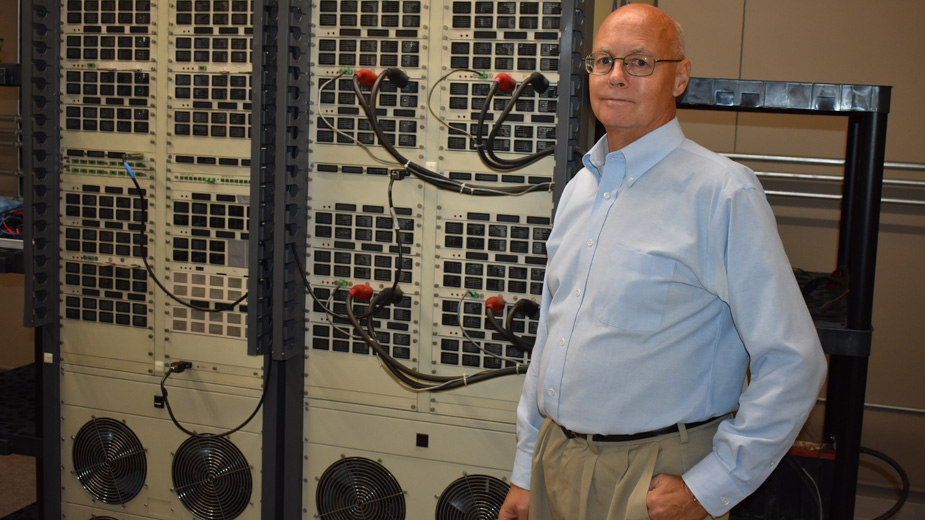Tech Belt Energy Center Opens Shared Resource Lab
WARREN, Ohio — Entrepreneurs at the Tech Belt Energy Innovation Center are “stoked” to finally have new testing equipment available at the downtown Warren incubator, says Rick Stockburger, TBEIC vice president and chief operating officer.
“The companies that are located here really have been waiting for this equipment,” he says. “It’s really an exciting time and they see that the investment that we’ve made is really an investment into the future of northeast Ohio. And those companies are going to be at the forefront of getting to test new equipment and create new products that are going to change the world.”
Nearly $500,000 in grants from the Appalachian Regional Commission and the Ohio Board of Regents paid for the new equipment that offers several capabilities for “people in the energy space,” says Chris Mather, an entrepreneur in residence at TBEIC.
Among the additions are battery-testing equipment that can test anything from button cells to an array of linked car batteries, a simulator that monitors the effects of putting renewable energy onto the grid or the effects of lightning strikes and blackouts on equipment, and other testing equipment for electrical engineers.
TBEIC’s lower level has a space for larger pieces of equipment “where we can put bigger things and dirtier things,” says Bill Whittenberger, the incubator’s chief technical officer.
Additional features include a wet lab, where entrepreneurs can make small samples of batteries or fuel cells, as well as an Internet of Things capability, Mather says.
“The Internet of Things is taking things that are found in sensors or controllers or whatever, and turning it into things that you can actually see via the internet,” explains Dave Nestic, TBEIC executive in residence and program adviser.
The Internet of Things, or IoT, is based around “smart” devices that are connected to the internet, such as thermostats, cars with built-in sensors, heart monitors or even manufacturing equipment.
“As you’re developing these products, that have these embedded technologies that can sense things and then deliver their information via the internet,” Whittenberger adds, “you’ll be able to test whether or not they can work in the environments that they’re designed for. They will have the timing that’s necessary to deliver the information via the specific protocols over the internet.”
Lab equipment can measure the radio frequency performance of a certain IoT device, as well as battery life and power consumption on smaller devices like cellphones, he says.
TBEIC works with utilities that deal with manufacturers of appliances connected to the power grid. “They have specific communication protocols to do things like monitor hot water tanks or air conditioning units or thermostats in your home,” Nestic says. Manufacturers incorporating technologies that connect their products to the Internet of Things have to meet communication and control standards, he says.
In addition to TBEIC tenants and portfolio companies, Mather says others can rent space and access equipment that in many cases isn’t affordable or doesn’t make economic sense for them to purchase.
Pictured at top: An Arbin battery tester is among the new equipment at TBEIC, says Chris Mather.
Copyright 2024 The Business Journal, Youngstown, Ohio.



